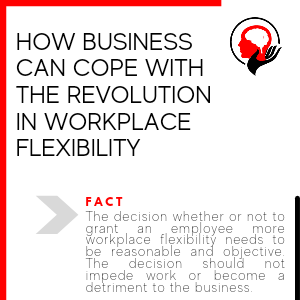How Businesses Can Cope with the Revolution in Workplace Flexibility
We are currently witnessing a revolution in our understanding of the workplace. Working remotely was once the exception, but quickly became the norm after the COVID-19 pandemic spread worldwide, forcing people to stay at home and find ways to carry on working. Now, employees actually prefer a more flexible workplace: two-thirds of the people surveyed by ISPOS for the World Economic Forum (WEF) said that they would prefer to retain this flexibility after the pandemic is over. It seems that things won’t go back exactly to the way they were before. The question becomes, how do businesses cope during this period?
As the world opens up again, businesses are trying to figure out whether to return to work on-site or continue working remotely. A hybrid workplace is the popular middle-ground, where businesses allow employees at least one day a week to work remotely from home.
However, each business must come to its own conclusions on what works best for it. So long as the job gets done without the work being compromised, then flexibility in the workplace can be a positive thing. For example, a flexible workplace can help cut down on office costs and motivate employees.
The degree of workplace flexibility will vary with how often a business needs its employees back in the office. During the pandemic, some businesses had to waive certain employee tasks for different reasons, such as limited access to necessary resources or technology. The important thing was to get the basic job done. But when it is safe to return to the worksite, businesses have a right to ask that tasks be fully restored.
A business finally figures out its new approach to the workplace, but then an employee submits a request for more flexibility. How does a business proceed? Employee reasons will vary—from taking care of sick family members to accommodating disability—but need to be valid and well documented for when the request is studied. The duration also needs to be clearly communicated and whether the request is for permanent or temporary flexibility. It is easier to navigate such requests with a remote-work policy in place, the Society for Human Resource Management (SHRM) suggests. Such policies outline eligibility, procedures, rights, and responsibilities when it comes to remote work.
The decision whether or not to grant an employee more workplace flexibility needs to be reasonable and objective, accommodating when possible, without being unnecessarily difficult. However, the decision should not impede work or become a detriment to the business. A company might request a trial period to see whether the new arrangement will succeed. The key thing here is that employers and employees remain open to cooperation on the matter of workplace flexibility.





